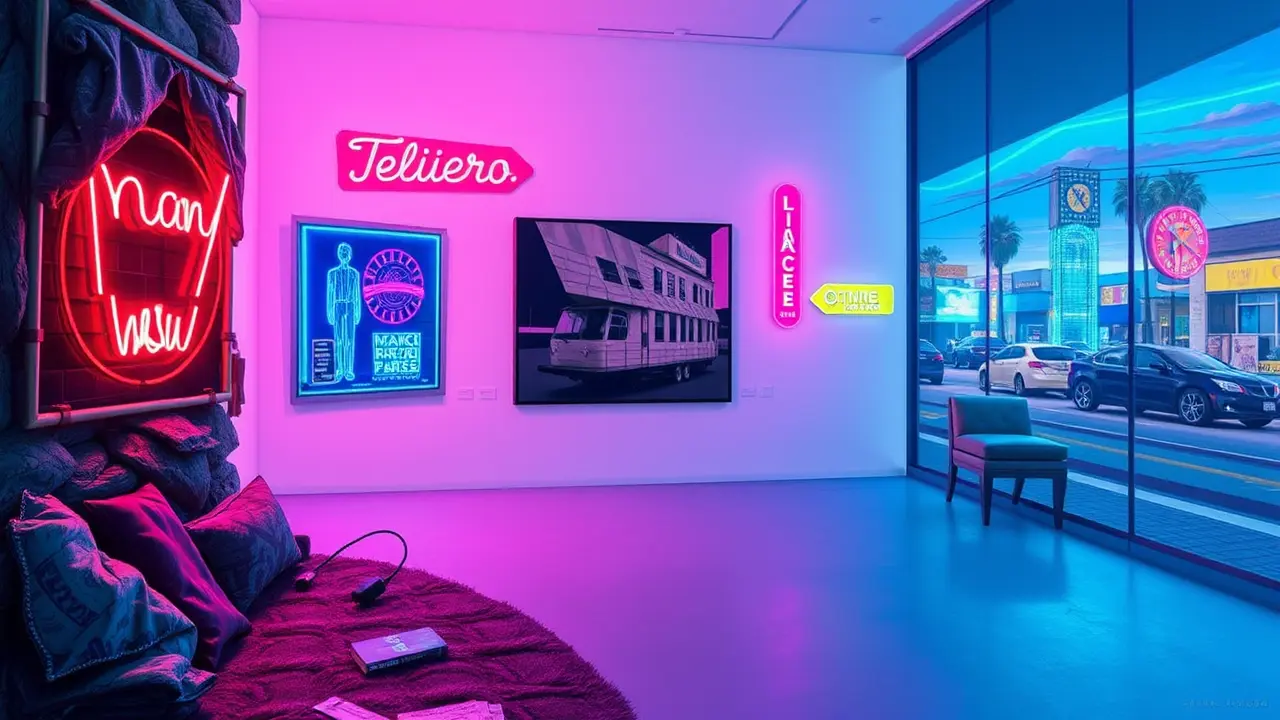Creative Visions of Two L.A. Artists Converge
Within the curated white walls of Luis De Jesus Los Angeles, a compelling dialogue on the nature of identity and memory unfolds, not through a sprawling group show, but through the potent, focused convergence of two distinct artistic voices: Karla Diaz and Frank Romero. To walk through this exhibition is to traverse the internal and external landscapes of Los Angeles itself, moving from the deeply personal, almost psychic chambers of Diaz's work to the vibrant, public theater of Romero's iconic cityscapes.Diaz’s practice operates like an archeological dig into the self, excavating fragments of personal history, cultural inheritance, and dream logic, often rendering them in a raw, visceral style that feels both confessional and universally resonant; her pieces are the inner monologues of the city, the whispered secrets and suppressed memories that give a place its true, complex character. In stark yet complementary contrast, Frank Romero translates the city's external pulse into a visual symphony of neon signs, lowriders, and dramatic urban tableaus, his bold lines and saturated, almost celebratory color palette capturing the performative energy of L.A. life while simultaneously encoding it with subtle socio-political commentary that speaks to Chicano identity and the constant negotiation between assimilation and cultural preservation.This curatorial pairing is a masterstroke, forcing a conversation between the private self and the public persona, between the memories we hold inside and the stories we project onto our surroundings. The gallery becomes a liminal space where Diaz’s psychological interiors and Romero’s civic exteriors meet, suggesting that identity is not a fixed point but a continuous loop—the city shapes the individual just as profoundly as the collective inner lives of its inhabitants shape the city's soul.It’s a narrative rich with symbolism, where a single brushstroke by Romero can echo a found object in Diaz’s installation, each artist, in their own unique dialect, asking the same essential questions about belonging, history, and the ghosts—both personal and collective—that haunt the sunshine and smog of Los Angeles. This isn't merely an art show; it's a critical thesis on place-making and self-discovery, rendered with the emotional depth and nuanced observation that marks the most enduring works of cinematic or literary art, proving that the most powerful stories about a city are often told not from a panoramic view, but from the intersection of its most intimate rooms and its brightest, most public lights.
It’s quiet here...Start the conversation by leaving the first comment.
© 2025 Outpoll Service LTD. All rights reserved.
